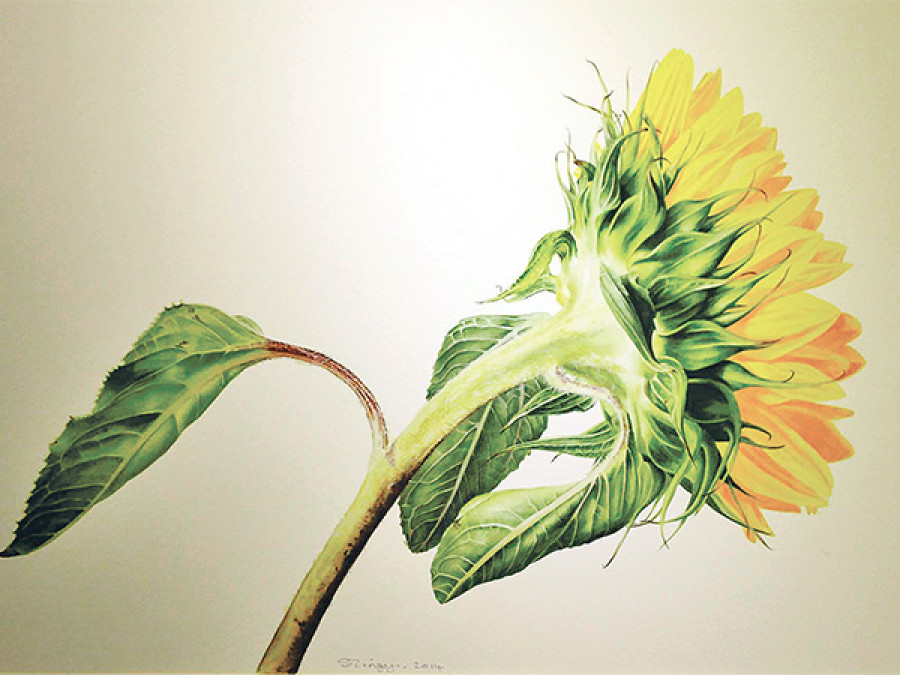Entertainment
Botanical drawing as art form
Today art exists in so many varied and wondrous forms that it would be hard to list all without making some egregious omissions.
Sophia Pande
Botanical art has serious scientific origins, therefore the people who draw on behalf of recording details of flora from around the world must follow a certain kind of formula, creating detailed records that botanists all over the world must be able to identify and decipher at a glance, just as those fluent in a language can recognise entire phrases from a distance, on billboards, and even on the page. The development of this particular documentation, therefore, relies on verisimilitude to the maximum, ergo the love for these drawings; after all, who doesn’t want vibrant, beautiful plants in their living rooms and bathrooms.
The tradition of botanical art goes back as far as 512 AD, during the Roman Empire, a practice that began as a way of drawing plants and describing them for their medicinal purposes. Here too, we have a particularly memorable tradition of botanical art, which was started by the visit of Dr Francis Buchanan Hamilton, who came to Nepal from 1802-1803, via colonial India, with an Indian artist, on a mission to record Nepali flora. That mission resulted in over a hundred exquisite drawings by the now unknown Indian artist. This lapse is a tragedy that is representative of those times, especially since the works are now carefully housed as part of the Buchanan Hamilton Collection at the Linnean Society in London, and regarded as priceless pieces of history, records of a slice of nature, and undeniable works of art that have much influence in the way botanical drawing is seen today.
So, who are the people who make these drawings? Are they scientists or artists? Where do these things overlap? For an art historian, these are fascinating questions to ask about a very particular, very precise segment of a skill set that produces detailed works that so many people adore as art, but is also now established as an institutionalised, highly regarded practice.
My questions were answered during a visit to the Park Gallery some days after the most recent Botanical Art Exhibition took place, a few weeks ago. The show was opened in conjunction with a two-week-long workshop led by Jacqui Pestell and Isik Güner, botanical artists who travelled here (along with four other artists from the Royal Botanical Garden, Edinburgh) to celebrate the 200th Anniversary of Nepal-Britain relations and to
pay homage to the original drawings by that unknown but revered Indian artist who travelled with Buchanan Hamilton.
The six artists will revisit those now over 200-year-old works and re-illustrate them in homage, if you will, to the original pieces of flora that were painted during that first visit. The two- week-long visit by these artists is part of a series of training workshops aimed at teaching botanical artists here the technical details that some may need some help with.
Discussing the work with Pestell, and Neera Joshi Pradhan, a well-known botanical artist herself, I learned that while it takes dedication, years of study, and extensive practice to execute the calibre of botanical drawings that these seven ladies (Pradhan included) produce, each and every one of them has a keen interest in the aesthetics inherent to the form, in addition to staying to true to the scientific principles that now dictate most botanical drawing.
Of the photos that you will see accompanying this article, you will find the Sunflower—which is made by Sharon Tingey— a pure artistic pursuit and one of a series, with each piece being painted as just variations of the flower itself, a contrast to Wild Irises, made by Lyn Campbell, which is not any less beautiful, but provides detailed views (with precise magnification notations) regarding the vital aspects of a plant that must be represented in these drawings, such as the cross-section of the flower, details of the roots, seeds, etc.
These prints exhibited at the show (some of the originals are much larger in size and could not travel), along with the others made during their two-week stay by the botanical artists, will be displayed next year, in the summer of 2016, at the Royal Botanical Gardens in Edinburgh, and, if all goes well, will travel to Nepal after.
While it is easy for purists to laugh off people’s pleasure with these botanical drawings, I experience nothing but delight and a measure of awe at the skill of the artists and the exquisite drawings that have emerged from this strange cocktail that is both art and science.




 20.12°C Kathmandu
20.12°C Kathmandu










